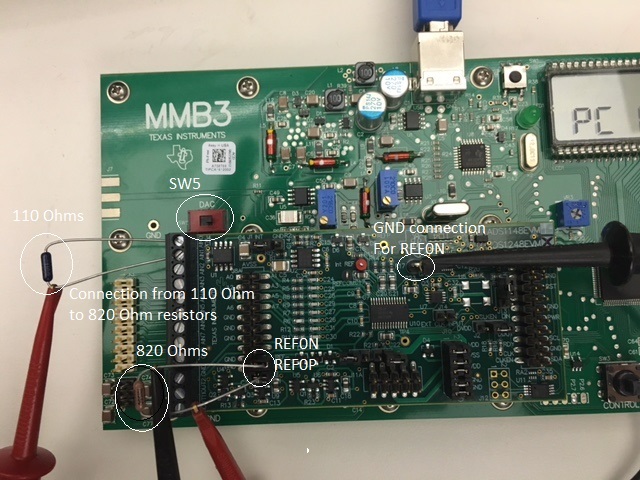Hello,
I'm using the ADS1148EVM-PDK to measure a P100 RTD in 2 wire mode. The RTD is connected to AIN0 and AIN1.
For the board, I have removed R14 and R15. And replaced C20 with a 845Ohm resistor. This is my Rbias. I replaced C24 and C25 with 0 Ohm resistors. I removed C7. I attached a small wire from AVSS to one side of the 845 Ohm resistor and a wire from AIN0 to the other side of the 845Ohm resistor.
From the ADCPro software, Power & Ref, I enabled Internal Reference. IDAC Magnitude is set to 500uA. And IDAC0 is set to AIN. From IO Config AIN1 has IDAC0 and AINP enabled. AIN0 is connected to AINN.
In my simulation, current is generated at idac0. Current flows through the RTD (AIN1 to AIN0) and the bias resistor (REF1P and REF1N). With 500uA, there should be a voltage drop of ~422mV across Vbias. Using a 110Ohm resistor, there should be a voltage drop of ~50mV across AIN0 and AIN1. This checks out with a multimeter (418mV & 54mV).
Instead, VREF1 shows -0.00125V and 0.24382V across AIN0 and AIN1. I have tried unloading and reloading the EVM and Test multiple times as well as restarting ADCPro. I don't think it's a software issue. Any ideas as to why I am not seeing what I expect across VREF1 and AIN0/AIN1?


